In the world of business, patents are like honeytraps. Once you get into the mix, it becomes a constant headache. You think you’re safe because you came up with something “new,” but chances are, someone somewhere already filed something vaguely similar years ago. Patent searches can feel like digital archaeology — digging through millions of old ideas to make sure yours doesn’t accidentally step on anyone’s legal toes. Fun fact: over 90% of patents are never actually used commercially, and yet companies spend billions each year defending or disputing them. Even giants like Apple and Samsung have spent more on patent lawsuits than on some of their R&D projects. It’s messy, fascinating, and just a little bit absurd. Welcome to the world of patents.
In this tutorial, we’ll teach you how to use Perplexity’s AI search to find and analyze patents quickly. This helps you spot what’s already out there, see where there’s room for something new, and figure out how to position your idea without stepping on anyone’s legal turf.
By the end of this tutorial, you’ll learn how to:
- Access Perplexity patent search
- Explore and refine your patent search
- Turn on the agent for advanced analysis
- Evaluate and explicate your analysis
Let’s dive right in!
Step 1 - Access Perplexity patent search
Perplexity does not have a separate patent search feature. The prompt-based query is enough to find any patents related to your product. All you need to do is type your question in the prompt box.
Go to Perplexity and log in to an account. Alternatively, you can use the Perplexity Comet browser to do a patent search.
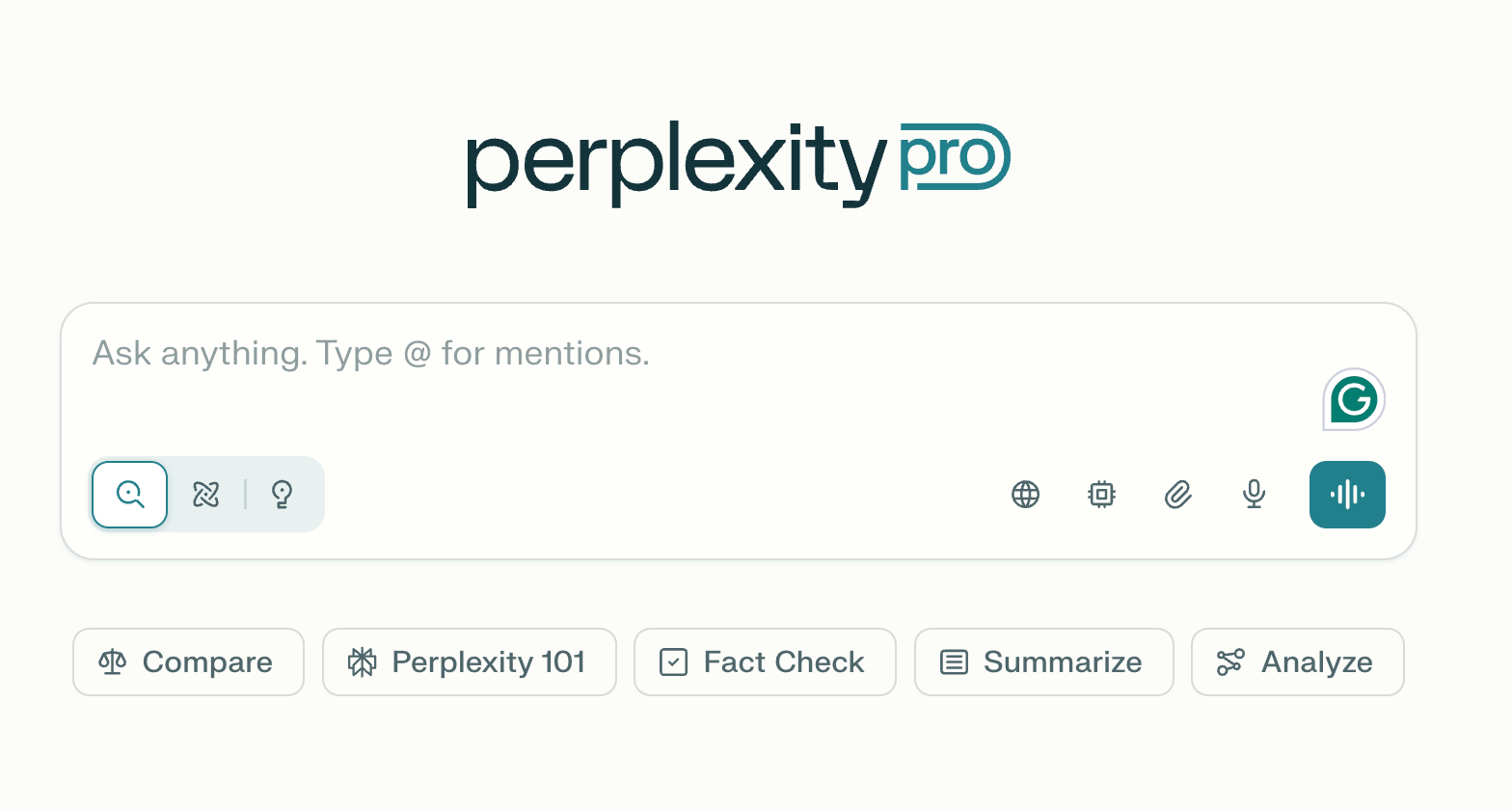
Prompt:
Are there any patents related to AI automations?

Perplexity automatically spots when your question is about patents and turns on its Patent Research (beta) feature. A “Patents” section will show up in your results with details like related filings, owners, and dates.
Step 2 - Explore and refine your patent search
Once you go through the results, make your search more specific by adding more context about your invention. Skip the stiff keywords and describe your idea in a natural, conversational way. For example:
Prompt:
Find active patents related to AI-driven industrial automation and model drift detection.
Perplexity reads your query for meaning, not just keywords, and pulls in patents that might use different wording. You can follow up with prompts like:
- Summarize the main claims of these patents.
- Show where the whitespace exists in this field.
- List the companies that currently hold patents in this area.
At this point, Perplexity acts like an AI research assistant. It connects the dots across results to show what already exists, and where you can safely innovate.
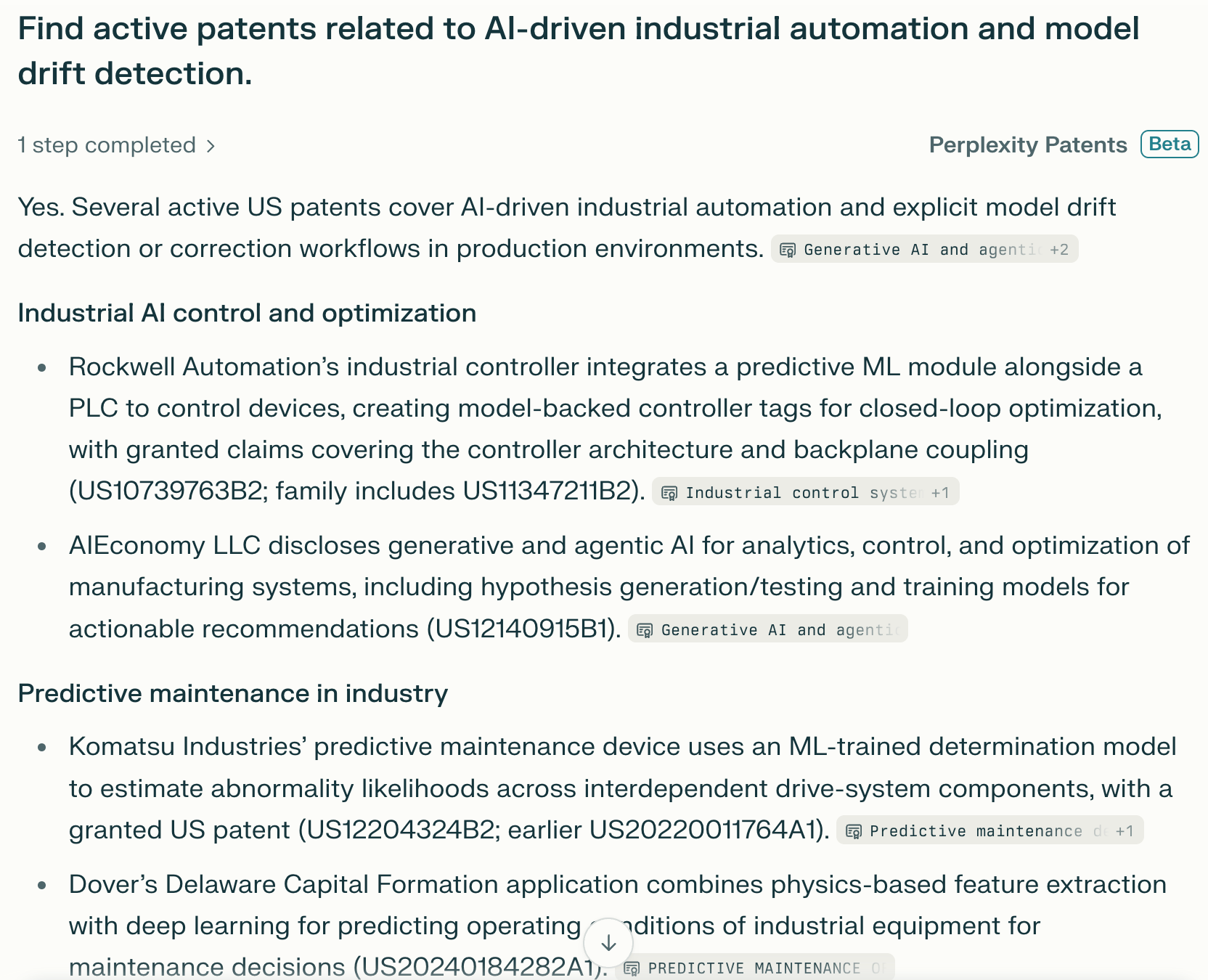
You can review the patents for let’s say, predictive maintenance in industry by clicking the link next to the information snippet.
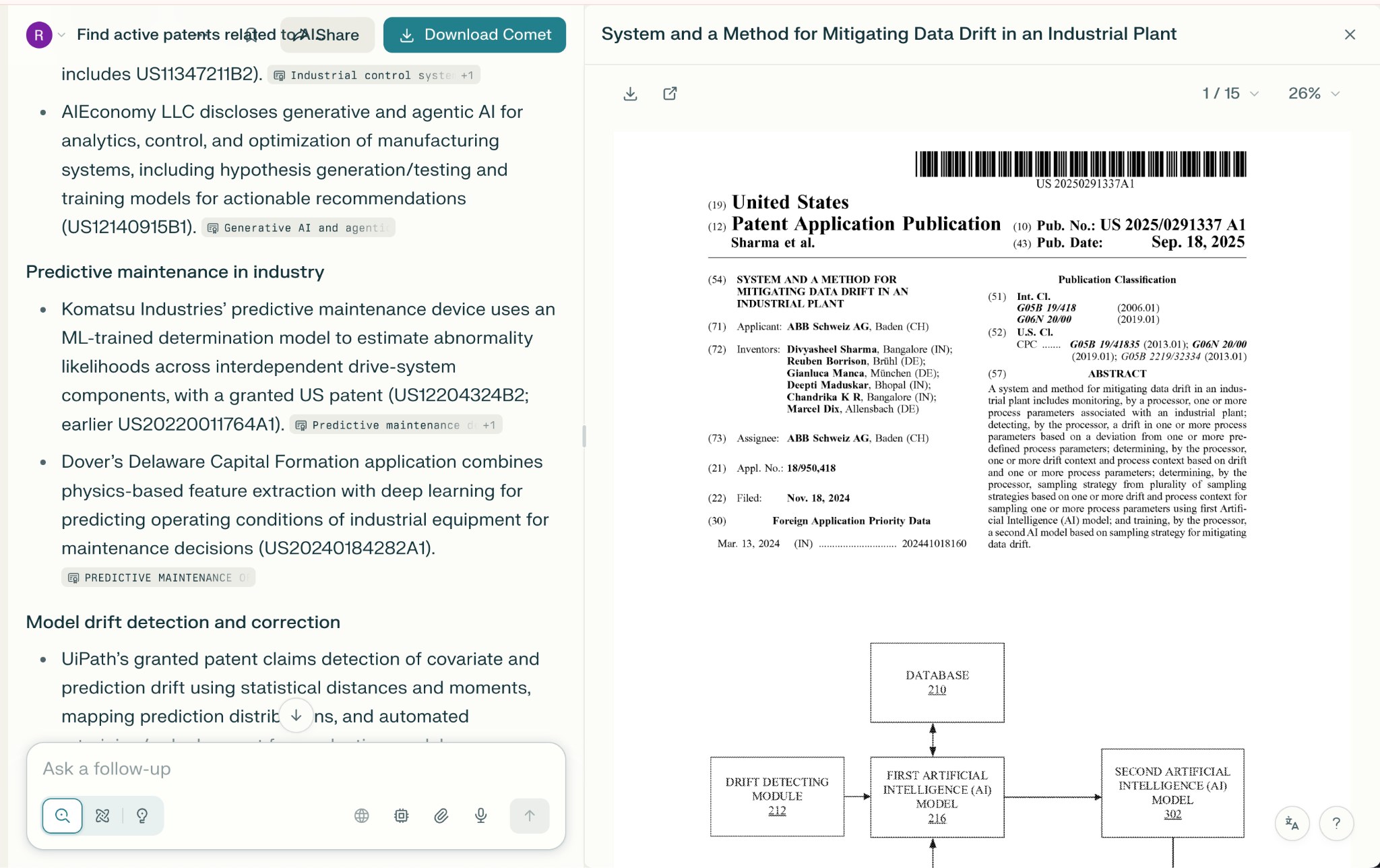
Step 3 - Turn on the agent for advanced analysis
For more advanced analysis and in-depth research, turn on the agent model in Perplexity. This allows the AI to perform multi-step reasoning automatically.

The agent will:
- Pull patents from different countries and databases
- Organize them into a clear, easy-to-read table
- Generate charts to help you visualize key research areas
When it’s done, you’ll see a progress summary (for example, “12 steps completed”). You can click on any step to review the data sources and methods used.

Step 4 - Evaluate and explicate your analysis.
Perplexity produces both visual and tabular outputs, often including a PNG chart and a CSV file. Review them closely:
- The PNG chart shows patent clusters, whitespace opportunities, and potential risk areas.
- The CSV file lists details such as patent IDs, titles, grant dates, owners, and claims.
Example insights:
- Companies like Siemens, IBM, and Zapier lead in specific automation fields.
- Whitespace may exist in areas like manual configuration, prebuilt libraries, or open-source options.
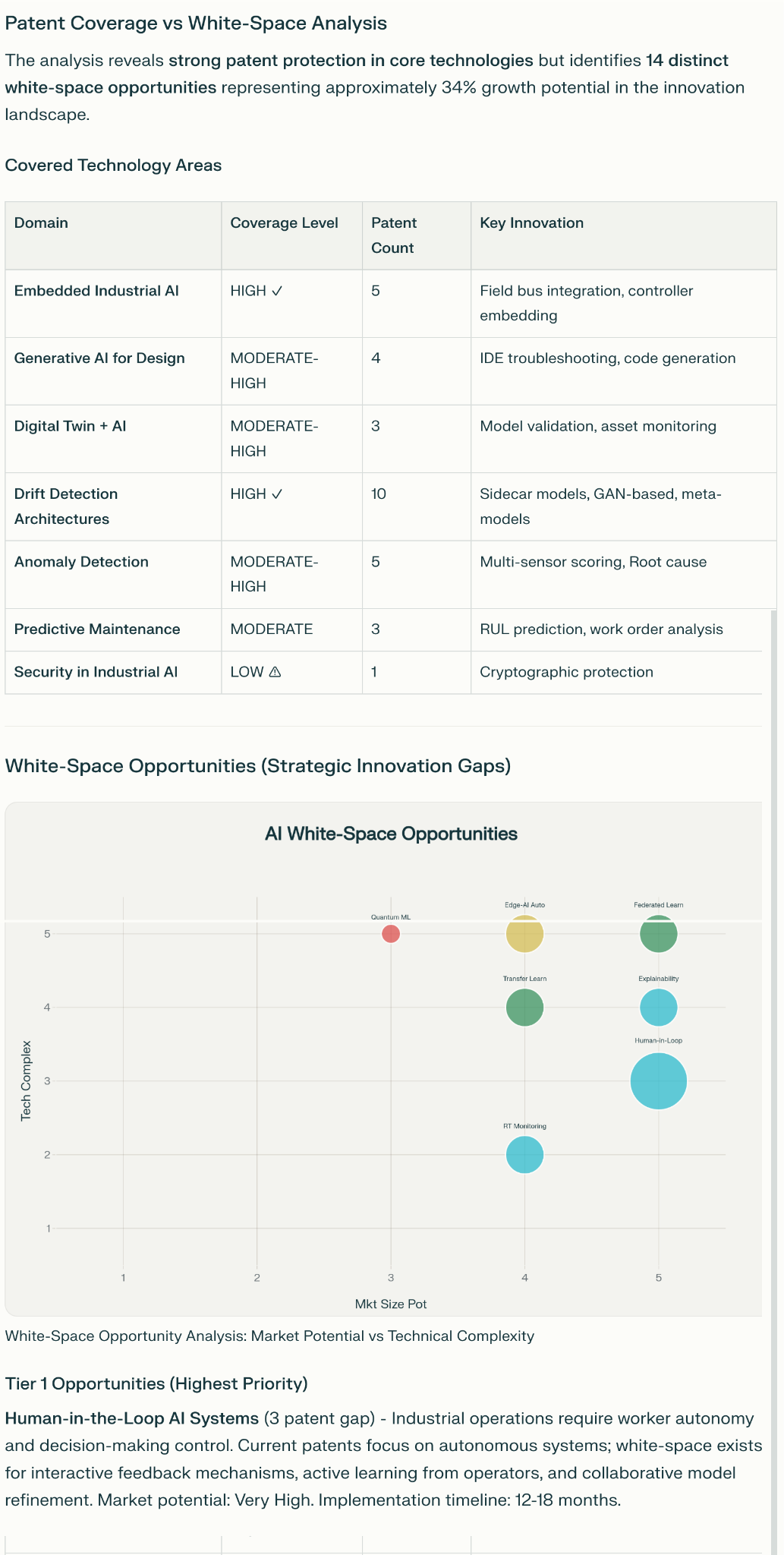
Together, these results give you a clear, tactical view of your innovation landscape, showing where you can move confidently and where you should tread carefully to avoid infringement.
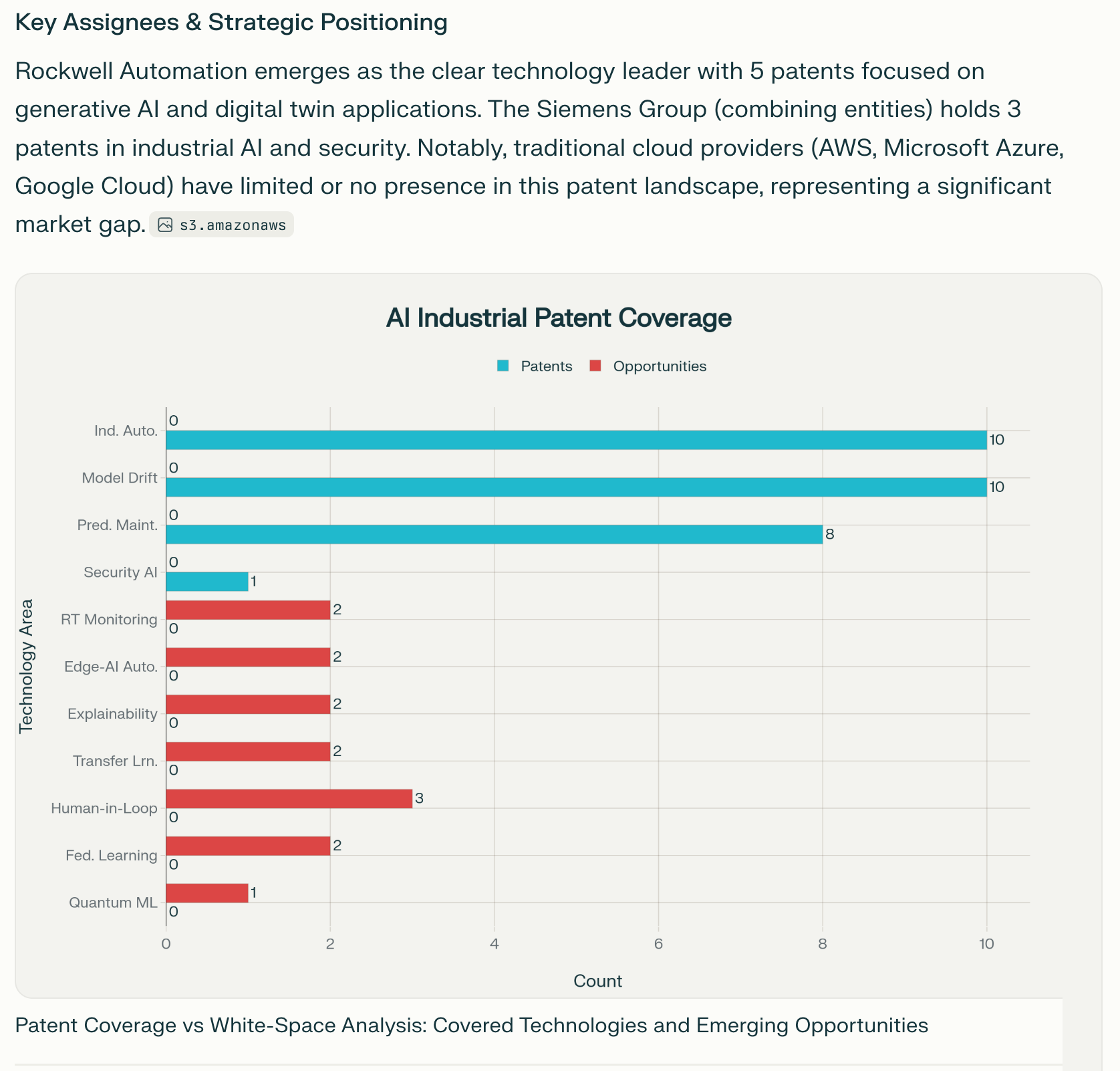
Traditional patent searches are slow, scattered, and often challenging to make sense of. Perplexity brings everything together in one place, giving you faster validation, lower legal risk, and a clearer picture of where innovation opportunities exist.
That’s it for this tutorial, AI technonauts! Start with a broad query to map out the full patent landscape. Then narrow it down. Ask the agent to list patents by company, summarize key claims, or visualize areas of whitespace where new ideas can thrive.
.avif)
.png)


.avif)
